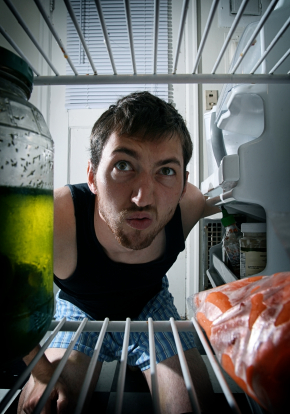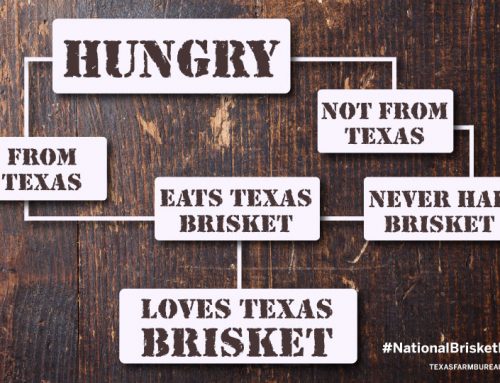By Nathan Smith
It’s midnight. You open the refrigerator door, surveying the late-night snack options. Hidden behind the plastic containers of leftovers, you retrieve the three-day-old Szechuan shrimp take-out. Hours later you realize that was a bad idea.
There is nothing fun about being sick for 24 hours while you wait on your body to rid itself of the bacteria ingested—making you call Ralph on the big white phone. Salmonella and E. coli are the two biggest culprits causing total misery.
Yet, there’s a way to prevent most foodborne illnesses. The Centers for Disease Control estimates that foodborne diseases cause approximately 76 million illnesses, 325,000 hospitalizations and 5,000 deaths in the United States each year. Food poisoning is nothing to take lightly and with grilling season firing up, there’s no better time to be aware of some food safety basics. Here are a few food safety tips from Texas Farm Bureau’s Be Ag Smart website:
- Always wash your hands with warm water and soap for 20 seconds before and after handling food.
- Don’t cross-contaminate. Keep raw meat, poultry, fish and their juices away from other food.
- Beef, veal and lamb steaks, roasts and chops should be cooked to 145° F.
- All cuts of pork, cook to 160° F.
- Ground beef, veal and lamb cook to 160° F.
- All poultry should reach a safe, minimum internal temperature of 165° F.
- Hot food should be held at 140° F or warmer.
- Cold food should be held at 40° F or colder.
- Discard any food left out at room temperature for more than two hours.
And of course—there’s an app for that. Last week, the USDA launched a great new mobile app for iPhone and Android users called “Ask Karen.” This app allows you to ask any food safety related question and find the answer immediately.
I downloaded the app over the weekend and put it to the test. I asked questions like: “How many times can I reheat food?” “What is the safe internal temperature when cooking chicken?” “How long does it take beef to thaw?” And, “Is a rare steak safe to eat?” These questions and more were answered with lightning speed.
Texas farmers and ranchers work hard to make sure the products they send to your plate are safe and tasty. But food safety must continue in the kitchen. It’s virtually impossible to determine how many people become ill due to undercooked meat or cross-contamination, but I’d guess a large percentage of foodborne illness cases are caused by improper preparation.
There are more resources available at conferences across the country. In Austin this week, the Texas Department of Agriculture and the Texas AgriLife Extension Service (among others) are hosting a food safety conference to address food safety recalls, pathogens, risk factors and research. Take a look around the globe, and you’ll see we already have the safest food supply. Still, government and industry officials are working to improve our country’s food system.
Whether you’re a five-star chef or master of the microwave, practicing food safety is a must.










Ugh! Food poisoning is the worst. I will be downloading Ask Karen to my Iphone today. It’s nice to know there is a place for food related questions like those. Thanks Nathan.
It’s definitely no fun. Thanks for reading – happy(safe) cooking!
I have really enjoyed the last several blog posts. Great job everyone! Keep ’em coming.
I had my first food poisoning experience last weekend—probably one of the worst illnesses I’ve ever had. I’ve always been really careful with food prep in my own kitchen, but I guess it’s impossible to stay completely shielded from contaminated restaurant fare. Thanks for the food safety tips, Nathan.
Thank LJ! Amanda, Im not sure how I’ve avoided it(knock on wood)!